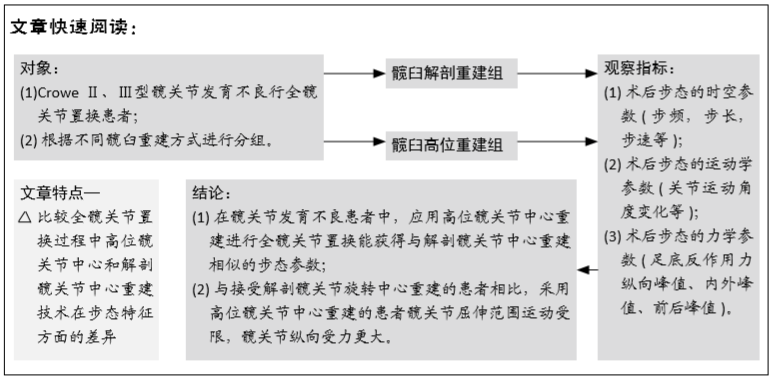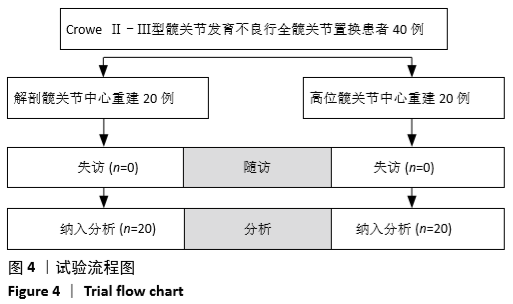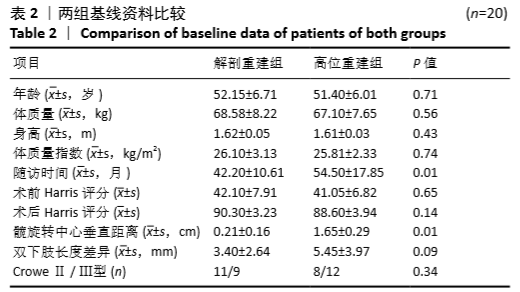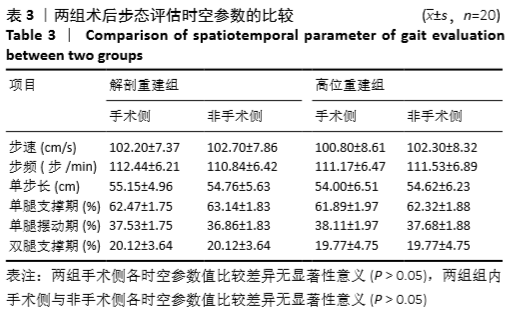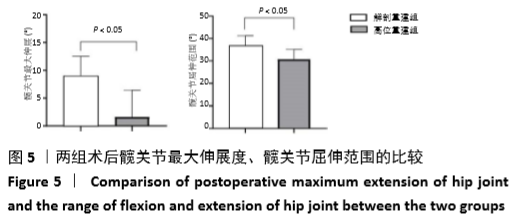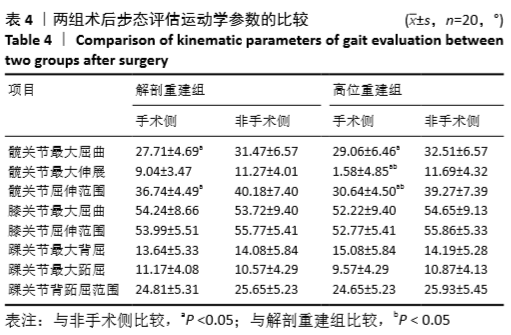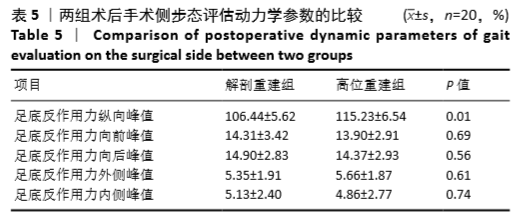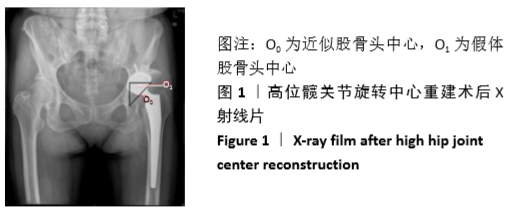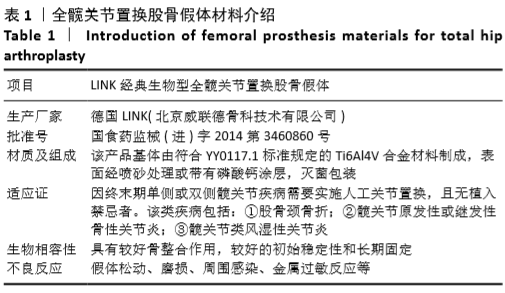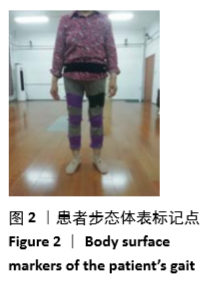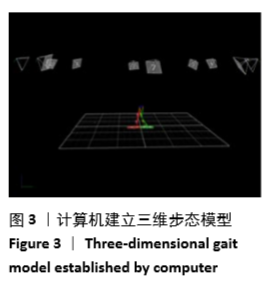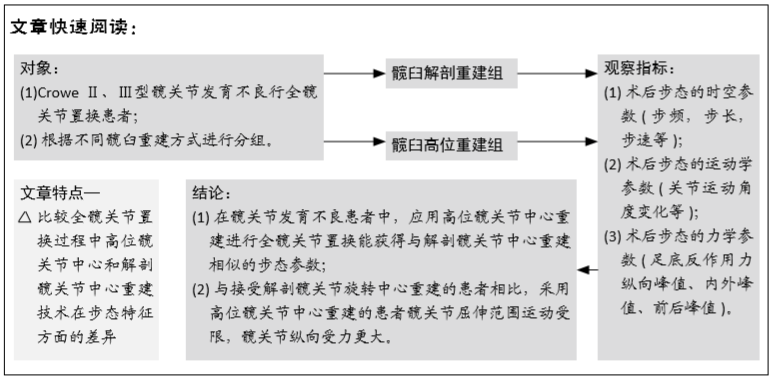[1] JASTY M, ANDERSON MJ, HARRIS WH. Total hip replacement for developmental dysplasia of the hip.Clin Orthop Relat Res.1995; 311(311):40-45.
[2] 任鹏,柴伟,周勇刚,等.人工全髋关节置换治疗CroweⅡ、Ⅲ型发育性髋关节发育不良-非骨水泥臼杯高旋转中心安放的短期随访结果[J].中华骨与关节外科杂志,2015,8(2):145-150.
[3] DELP SL, WIXSON RL, KOMATTU AV. How Superior Placement of the Joint Center in Hip Arthroplasty Affects the Abductor Muscles.Clin Orthop Relat Res.1996;328(328):137-146.
[4] 查国春,孙俊英,冯硕,等.髋臼外上方结构性植骨在髋关节发育不良全髋关节置换术中的应用[J].中华骨科杂志,2017,37(23): 1449-1457.
[5] PIZARRO FC, YOUNG SW, BLACUTT JH, et al. Total hip arthroplasty with bulk femoral head autograft for acetabular reconstruction in developmental dysplasia of the hip.J Bone Joint Surg Am.2013; 2013(4):615-621.
[6] GUSTKE KA. Jumbo cup or high hip center:is bigger better?.J Arthroplasty. 2004;19(4 Suppl 1):120-123.
[7] 赵松,陈云苏,张先龙.步态分析技术在人工髋关节置换术中的应用[J].中华骨科杂志,2010,30(7):700-703.
[8] CROWE JF, MANI VJ, RANAWAT CS. Total hip replacement in congenital dislocation and dysplasia of the hip.J Bone Joint Surg.1979;61(1): 15-23.
[9] PAGNANO W, HANSSEN AD, LEWALLEN DG, et al. The effect of superior placement of the acetabular component on the rate of loosening after total hip arthroplasty.J Bone Joint Surg.1996;78(7):1004-1014.
[10] BENEDETTI MG, CATANI F, BENEDETTI E, et al. To what extent does leg length discrepancy impair motor activity in patients after total hip arthroplasty?Int Orthop.2010;34(8):1115-1121.
[11] DOEHRING TC, RUBASH HE , SHELLEY FJ, et al. Effect of superior and superolateral relocations of the hip center on hip joint forces:An experimental and analytical analysis.J Arthroplasty. 1996;11(6): 693-703.
[12] BICANIC G, DELIMAR D, DELIMAR M, et al. Influence of the acetabular cup position on hip load during arthroplasty in hip dysplasia.Int Orthop. 2009;33(2):397-402.
[13] CHRISTODOULOU NA, DIALETIS KP, CHRISTODOULOU AN. High Hip Center Technique Using a Biconical Threaded Zweymüller?Cup in Osteoarthritis Secondary to Congenital Hip Disease.Clin Orthop Relat Res.2010;468(7):1912-1919.
[14] RUSSOTTI GM, HARRIS WH. Proximal placement of the acetabular component in total hip arthroplasty.A long-term follow-up study.J Bone Joint Surg.1991;73(4):587-592.
[15] KANEUJI A, SUGIMORI T, ICHISEKI T, et al. Minimum Ten-Year Results of a Porous Acetabular Component for Crowe I to III Hip Dysplasia Using an Elevated Hip Center.J Arthroplasty.2009;24(2):187-194.
[16] BENNETT D, OGONDA L, ELLIOTT D, et al. Comparison of gait kinematics in patients receiving minimally invasive and traditional hip replacement surgery:A prospective blinded study.Gait Posture. 2006;23(3):382.
[17] MADSEN MS, RITTER MA, MORRIS HH, et al. The effect of total hip arthroplasty surgical approach on gait.J Orthop Res.2004;22(1):44-50.
[18] MONT MA, SEYLER TM, RAGLAND PS, et al. Gait Analysis of Patients with Resurfacing Hip Arthroplasty Compared with Hip Osteoarthritis and Standard Total Hip Arthroplasty.J Arthroplasty.2007;22(1):100-108.
[19] KISS RM, ILLYÉS, ÁRPÁD. Comparison of gait parameters in patients following total hip arthroplasty with a direct-lateral or antero-lateral surgical approach.Hum Mov Sci.2012;31(5):1302-1316.
[20] CHEN G, NIE Y, XIE J, et al. Gait Analysis of Leg Length Discrepancy-Differentiated Hip Replacement Patients With Developmental Dysplasia: A Midterm Follow-Up.J Arthroplasty.2018;33(5):1437-1441.
[21] RENKAWITZ T, WEBER T, DULLIEN S, et al. Leg length and offset differences above 5mm after total hip arthroplasty are associated with altered gait kinematics.Gait Posture.2016;49:196-201.
[22] ARDESTANI MM, AMENÁBAR EDWARDS PP. Prediction of Polyethylene Wear Rates from Gait Biomechanics and Implant Positioning in Total Hip Replacement.Clin Orthop Relat Res.2017;475(8):2027-2042.
[23] FOUCHER KC, HURWITZ DE, WIMMER MA. Relative Importance of Gait vs.Joint Positioning on Hip Contact Forces after Total Hip Replacement.J Orthop Res.2009;27(12):1576-1582.
[24] 赵德伟,崔大平.全髋关节置换手术前后三维步态分析[J].中华外科杂志,2009,47(2):132-135.
[25] IKUTOMO H, NAGAI K, TAGOMORI K, et al. Gait Abnormality Predicts Falls in Women After Total Hip Arthroplasty.J Arthroplasty. 2018;33(10):3215-3219.
[26] HAUSDORFF JM. Gait dynamics,fractals and falls:finding meaning in the stride-to-stride fluctuations of human walking.Hum Mov Sci. 2007;26(4):555-589.
[27] STASZKIEWICZ R, CHWAŁA W, FORCZEK W, et al. Three-dimensional analysis of the pelvic and hip mobility during gait on a treadmill and on the ground.Acta Bioeng Biomech.2012;14(2):83-89.
[28] MIKI H, SUGANO N, HAGIO K, et al. Recovery of walking speed and symmetrical movement of the pelvis and lower extremity joints after unilateral THA.J Biomech.2004;37(4):443-455.
[29] PERRON M, MALOUIN F, MOFFET H. Three-dimensional gait analysis in women with a total hip arthroplasty.Clin Biomech (Bristol, Avon). 2000;15(7):504-515. |
